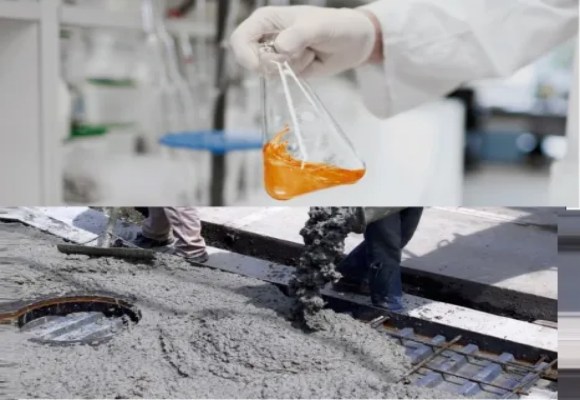Concrete quality control refers to variety of methods to ensuring the quality stability of concrete, which are key to ensuring the safety and durability of building structures. Here are some specific measures to ensure the stability of concrete quality.

Raw Material Selection For Concrete Quality Control
- Cement
Priority should be given to high-grade cement, such as 525R, 425R, etc., to reduce cement usage and lower hydration heat.
Choose low heat cement to reduce the temperature rise of concrete.
Fixed use of cement from the same manufacturer and variety to maintain the stability of cement quality.
Strictly conduct on-site testing on cement in accordance with relevant standards, including strength, setting time, stability, etc.
- Aggregate
Coarse aggregates should be selected from hard and well graded crushed stones or pebbles, with controlled indicators such as mud content and needle shaped particle content.
Fine aggregate should be selected from medium sand, and indicators such as mud content and fineness modulus should be controlled.
The storage area for aggregates should be hardened to prevent impurities from being mixed in.
- Admixtures
According to design requirements, select appropriate additives such as waterproofing agents, expansion agents, water reducing agents, retarders, etc.
Inspect the quality of external additives to ensure their performance meets the requirements.
Strictly follow the instructions for using additives to control the dosage.
Mix Proportion Design And Optimization
- Determine The Mix Design Indicators
Determine the mix design indicators for concrete based on engineering requirements, concrete strength grade, durability, and other factors.
- Conduct A Mix Proportion Test
Refer to relevant specifications and standards, and design the mix proportion based on the performance of raw materials.
Conduct trial mixing according to the preliminary design mix proportion to test the workability and mechanical properties of the concrete.
Adjust the mix proportion based on the trial results until it meets the design requirements.
- Verify mix proportion
Before actual production, verify the adjusted mix proportion to ensure its stability and reliability in production.
For the detail of concrete mixing process, please browse the article how does a concrete batch plant work.
Construction Process Management
- Control Mixing Time
Ensure that the concrete is mixed evenly and avoid situations where it is not mixed locally or mixed unevenly.
- Choose The Appropriate Mode Of Transportation
Ensure that concrete does not undergo segregation, bleeding, or other phenomena during transportation.
- Pouring and Vibration
Before pouring, inspect the formwork, steel bars, etc. to ensure they meet the design requirements.
Control the layer thickness and vibration method of pouring to avoid situations such as missed vibration and over vibration.
Effective temperature control measures should be taken for large volume concrete to prevent the occurrence of temperature cracks.
Maintenance And Testing For Concrete Quality Control
- Maintenance
After the concrete pouring is completed, it should be covered and watered for curing in a timely manner.
The curing time shall not be less than 7 days, and for concrete with anti-seepage requirements, the curing time shall not be less than 14 days.
Use methods such as watering, covering with plastic film, and grass curtains for curing to keep the concrete surface moist.
- Testing
At the mixing plant and pouring site, the slump and workability of the concrete mixture are inspected.
Produce concrete test blocks according to the prescribed frequency and conduct compressive strength tests.
Perform Rebound And Core Drilling Tests on concrete structural entities to verify the strength of the concrete.
Technical Management and Personnel Training
- Technical Management
Establish a sound quality management system and clarify the quality responsibilities of each department and personnel. Strengthen quality supervision and inspection, and promptly rectify and problems discovered.
- Personnel Training
Provide technical training to construction personnel to familiarize them with the process flow and quality requirements of concrete construction. Enhance the quality awareness and sense of responsibility of construction personnel.
In summary, ensuring the quality stability of concrete requires starting from multiple aspects such as raw material selection and quality control, mix design and optimization, construction process management, curing and testing, as well as technical management and personnel training.
Through comprehensive measures and continuous improvement, the quality stability of concrete can be significantly improved, providing strong guarantees for the safety and durability of building structures.

